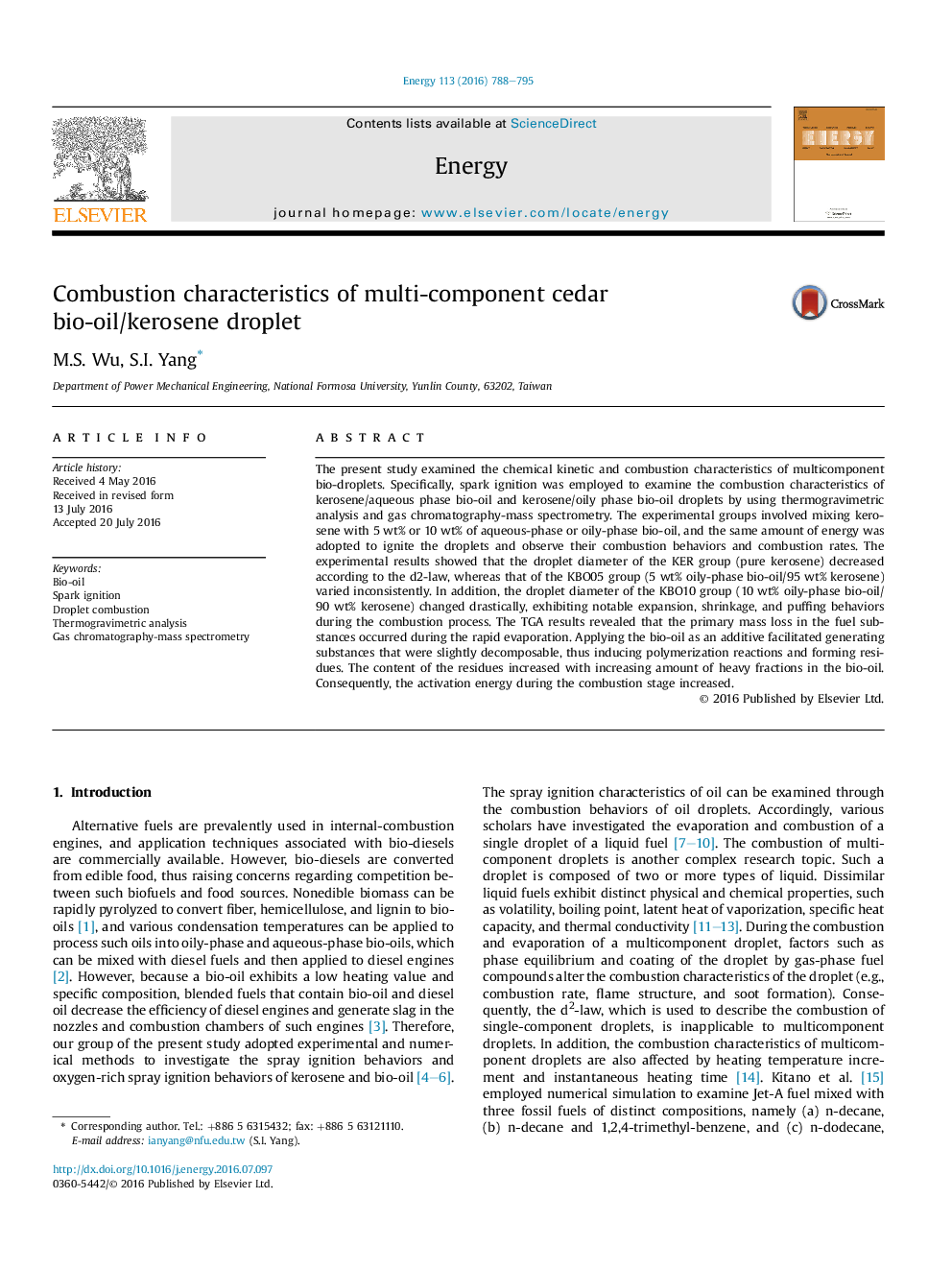| Article ID | Journal | Published Year | Pages | File Type |
|---|---|---|---|---|
| 1730782 | Energy | 2016 | 8 Pages |
•The oily-phase bio-oil was mainly composed of heavy fractions.•The aqueous-phase bio-oil was mainly composed of light fractions.•The volatile components of droplet dominate combustion processes.•The molecular chain of the components to undergo dissimilar extents of degradation.
The present study examined the chemical kinetic and combustion characteristics of multicomponent bio-droplets. Specifically, spark ignition was employed to examine the combustion characteristics of kerosene/aqueous phase bio-oil and kerosene/oily phase bio-oil droplets by using thermogravimetric analysis and gas chromatography-mass spectrometry. The experimental groups involved mixing kerosene with 5 wt% or 10 wt% of aqueous-phase or oily-phase bio-oil, and the same amount of energy was adopted to ignite the droplets and observe their combustion behaviors and combustion rates. The experimental results showed that the droplet diameter of the KER group (pure kerosene) decreased according to the d2-law, whereas that of the KBO05 group (5 wt% oily-phase bio-oil/95 wt% kerosene) varied inconsistently. In addition, the droplet diameter of the KBO10 group (10 wt% oily-phase bio-oil/90 wt% kerosene) changed drastically, exhibiting notable expansion, shrinkage, and puffing behaviors during the combustion process. The TGA results revealed that the primary mass loss in the fuel substances occurred during the rapid evaporation. Applying the bio-oil as an additive facilitated generating substances that were slightly decomposable, thus inducing polymerization reactions and forming residues. The content of the residues increased with increasing amount of heavy fractions in the bio-oil. Consequently, the activation energy during the combustion stage increased.
